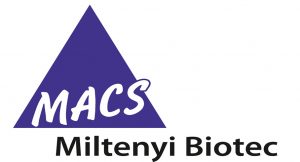Optimizing cell-based product consistency through automation
Cell & Gene Therapy Insights 2019; 5(Suppl. 6), 661-666.
10.18609/cgti.2019.075
Q Can you give us some background in terms of your role in developing the CliniMACS Prodigy T Cell Transduction process – firstly, what does this process entail, specifically?
NMT: I joined Miltenyi Biotec in 2009 after graduating as an engineer in chemistry and biotechnology. As a project manager and team coordinator in the immunotherapy and gene engineering R&D team, I focused on developing tools and technologies for clinical applications of adaptive T-cell therapy.
The main focus for my team and I is the development of methods and reagents for the translation of state-of-the-art techniques, enabling the automated production of gene-modified T cells by the CliniMACS Prodigy.
In addition, we are also involved in the development of GMP-grade and CE-certified reagents, which enable T-cell selection, stimulation and cultivation.
Turning to the CliniMACS Prodigy T cell transduction process, this is an application on every CliniMACS Prodigy for the automated production of engineered T cells, such as CAR T cells. The process selects cells before they are activated with an activation agent called T Cell TransAct™, which was specifically designed for use with the Prodigy.
T Cell TransAct™ is a nanomatrix conjugated to recombinant humanized CD3 and CD28 agonists. Its small size allows for it to be sterile filtrated and also helps with ease of removal, which is done by diluting the cell culture and removing excess media. This means there is no need for any further use of harsh dissociation reagents.
Viral vector is then added to the activated cells in the system and the transduced cells are allowed to expand until the operator reaches the desired number of cells.
This application essentially allows you to automatically manufacture CAR T cells in a sterile closed system. If you consider even a simple manual task, such as using a pipette to replace media, that pipette usage will probably be different for each individual. Automation is important as it reduces this variability and the chances of human error. Additionally, the closed system prevents sample contamination and ensures the operator is kept safe at all times.
Q What does your R&D role involve on an ongoing basis? Can you share details on how Miltenyi is looking to continue improving this process?
NMT: We at Miltenyi already provide the only functionally closed system device for the manufacturing of CAR T cells that follows the complete process of cell selection, activation, transduction and expansion.
We are now looking to expand this capability by creating a process that can expand a larger number of cells. This means we need to adjust the CliniMACS Prodigy application, the number of cells we start to process with, the amount of T Cell TransAct™, the amount of virus – almost everything needs to be adjusted.
Initially, we started the T-cell transduction process with culture media containing serum. Due to the complexities associated with using serum, we further developed the T-cell transduction process to be serum-free during expansion, with no impact on cell numbers, viability and functionality.
And finally, to maintain the high usability and safety of our CliniMACS Prodigy system, we strive to provide the best solutions that meet the customer needs. One example of this is improving the functionality and usability of the CliniMACS Prodigy tubing set, which is used in CAR T cell therapy manufacture. The tubing set is a critical part of the system. It’s a preassembled, single use consumable comprised of all bags, tubes, enrichment column and centrifugation/cultivation chamber. But even a seemingly small improvement, such as including an additional waste bag, can have an impact – in that particular example, by ensuring the operator does not need to do this manually.
Q What are the key variables that can impact the cell transduction process?
NMT: Transduction can be highly variable within any manufacturing process, especially when it is conducted manually. We have little control over the transduction efficiency as it usually depends on a few factors. However, there are certain considerations that can make a difference.
For instance, starting with selected CD4-CD8 T cells greatly reduces differences in starting material. Another factor is the concentration and titer of the vector. Avoiding a poorly concentrated viral vector – thereby avoiding adding large volumes to your cell culture – can increase transduction efficiency.
An additional factor is the state of T-cell activation, meaning one can increase transduction efficiency by identifying the optimal time point for transducing the T cells after activation.
In general, the vector construct has an impact, too – the addition of single amino acids can affect the transduction efficiency, for example.
And last but not least, contamination of other immune cells can influence the efficacy of viral gene modification. Others and I have found and published the impact monocytes have: the lower the monocyte contamination, the higher the transduction efficiency.
Q What for you are the major considerations when trying to improve consistency of a cell-based product?
NMT: It used to be a commonly held belief that automation of manufacture of a cell product would not be possible due to the biological differences, patient-to-patient. For example, the starting blood material from cancer patients is heterogeneous. In my experience, I’ve seen different compositions of immune cells even with patients with the same disease. These compositions are usually not near the normal range seen in a healthy donor.
However, performing a cell enrichment will increase the number of cells of interest during the cell transduction and expansion steps. And as we discussed earlier with the pipetting example, automation does reduce human error. Automation is extremely important for creating robust and consistent cell-based products and minimizing the number of failed production runs. It’s best to consider implementing automation as early as possible to ensure you do not get locked into a complex, manual production process.
Q What is current thinking and the state-of-the art in automation of cell transduction processes, and what do you expect to see in terms of future evolution in this area?
NMT: There are currently several different devices that assist and perform steps for manufacturing of cell products. Generally, we can categorize these devices as being either fully automated, or a more modular system to complete the manufacturing process.
We at Miltenyi believe that the fully automated approach is more beneficial for complex manufacturing. Right now, the CliniMACS Prodigy can fully automate the production of up to 5 billion cells using the T-cell transduction process.
Formulation and preparing the dose is a complicated process for many people. We are looking to solve this problem by creating another device and some software for the CliniMACS Prodigy to automatically formulate the final cell product while in this closed system.
To support this application, we are developing a formulation unit and new Prodigy software – solutions suitable for formulation and cryopreservation.
Viral transduction methods are now widely accepted in the community as a method of delivering genetic content. Still, many people do like to use electroporation for gene delivery. We’re also working on an electroporator that can be used with the CliniMACS Prodigy while maintaining the closed system. This will be another first for the field.
Q Can you describe the reagents that are currently available (e.g., T-cell selection reagents at the start of the process) and discuss their pros and cons in application?
NMT: If we consider both the selection and activation steps in the CAR T cell manufacturing process, there are many different products available. If you are using research-grade products, it’s important to consider those that can be translated and used for GMP production at a later time point.
Starting with selection, magnetic beads conjugated to antibodies are commonly used for isolating immune cell populations. In the case of CART manufacturing, you would obviously use reagents for isolating T cells.
Moving on to activation, there are bead-based methods that are well established in the field. These magnetic beads are commonly conjugated to CD3 and CD28 monoclonal antibodies. This means the use of a magnet is required for the removal of the activation beads, of course.
This leads us to the development of T Cell TransAct™ for activating T cells. This product is designed to be used for the manufacturing of engineered T-cell products such as CAR and TCR modified T cells. TransAct™ is used by the Prodigy T cell transduction process but also by many other non-Prodigy customers, who appreciate its ease of use in both automated and manual manufacturing processes.
CD3 and CD28 pure antibodies are also used for the activation of T cells. These are relatively easy to use, but as with all raw materials in any GMP manufacturing process, you need to be able to demonstrate the effective removal of the reagent.
And finally, in process control and quality control is important for GMP manufacturing. Flow cytometry is one of the key tools used to analyze cell products. I would advocate using a suitable flow cytometer in a combination with suitable fluorochrome conjugated antibodies for characterizing cells. Selecting the best antibodies for cell analysis comes down to traditional monoclonal antibodies versus recombinant engineered antibodies. Recombinant engineered antibodies have recently been shown to be more stable over time and can be engineered to improve the staining profile.
Q Why is it so important to maintain high quality of reagents?
NMT: The quality of the final cell product can depend greatly on the quality of the reagents and material used during the manufacturing process.
For example, sourcing recombinant cytokines with high purity is important for the consistency and safety of the final cell product. Equally, the use of media that is animal- and human-derived component-free is also important with regard to consistency and safety as this will affect the overall performance of the product.
Affiliations
Nadine Mockel-Tenbrinck
Team Coordinator and Project Manager in the Immunotherapy & Gene Engineering Team of the Research & Development department of Miltenyi Biotec GmbH.
This work is licensed under a Creative Commons Attribution- NonCommercial – NoDerivatives 4.0 International License.


